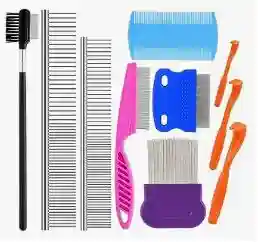The title looks very simple but many of us have the same question in our mind. We will try to understand the importance of bathing a dog and will explore all you want to know. In this comprehensive guide, we will walk you through the step-by-step process of bathing your beloved canine companion to ensure they stay clean, healthy, and happy. Regular grooming and bathing are essential for maintaining your dog’s overall well-being and promoting a strong bond between you and your furry friend. Let’s explore and understand how often to bathe a dog.
Understanding the Importance of Bathe a Dog

Bathing your dog is not just about keeping them clean; it also serves various important purposes:
- Removal of Dirt and Odors: Dogs love to explore the outdoors, and they can get dirty quite quickly. Regular baths help remove dirt, debris, and unpleasant odors from their fur.
- Skin and Coat Health: Proper bathing keeps your dog’s skin healthy by removing excess oils and preventing skin issues like dryness, itchiness, and hot spots. It also promotes a shiny, soft coat.
- Tick and Flea Prevention: Bathing your dog with a suitable shampoo helps repel ticks and fleas, reducing the risk of infestations.
- Bonding Experience: Bath time can be a positive and enjoyable experience for both you and your dog, strengthening the emotional connection between you.
Preparing for the Dog Bath
Before you start the bathing process, gather all the necessary supplies to ensure a smooth and stress-free experience for your furry friend. You will need:

- Dog shampoo (specifically formulated for dogs, as human shampoo can be harmful to them)
- Towels
- Rubber bath mat (to prevent slipping in the bathtub)
- Dog brush or comb
- Cotton balls (for cleaning ears)
- Treats (to reward good behavior)
- A calm and patient demeanor
Step-by-Step Guide to Bathe a Dog
Step 1: Brush Your Dog’s Coat
Before getting your dog wet, brush their coat to remove any tangles and loose hair. This not only helps in the bathing process but also reduces the likelihood of matting and tangling after the bath.
- Choose the right brush: Different breeds and coat types require specific brushes (slicker brushes, bristle brushes, undercoat rakes, etc.).
- Set the mood: Find a quiet, comfortable space where your dog can relax during the brushing session.
- Check for tangles: Gently run your fingers through your dog’s coat to locate any tangles or mats before brushing.
- Start slow: Begin brushing in the direction of hair growth, using gentle and controlled strokes.
- Positive reinforcement: Offer treats and praise to create a positive association with brushing.
- Gradually increase pressure: As your dog becomes comfortable, you can apply slightly more pressure to reach the undercoat.
- Pay attention to sensitive areas: Be gentle around the ears, tail, belly, and areas where the skin is thinner.
- Use detangling spray: For stubborn knots, use a detangling spray to make the process easier.
- Regularity is key: Brush your dog’s coat regularly to prevent matting and keep it healthy.
- Focus on undercoat: During shedding seasons, use an undercoat rake or de-shedding tool to remove loose fur.
- Be patient: Take breaks if your dog gets restless, and ensure the experience remains positive.
- Monitor for skin issues: While brushing, keep an eye out for signs of irritation, redness, or skin abnormalities.
- Trim long hair: If your dog has long hair, occasional trimming around the paws and face can help maintain cleanliness.
- Bathe as needed: Brushing helps distribute natural oils, but bathe your dog when its coat gets dirty or smelly.
- Consult a professional: If you’re unsure about your dog’s specific coat needs, consult a groomer or veterinarian.
Adjust your brushing routine based on your dog’s coat type, temperament, and specific needs.
Step 2: Prepare the Dog Bathing Area

Place your rubber bath mat at the bottom of the bathtub or basin to provide your dog with a stable surface. Fill the tub with warm water, ensuring it is at a comfortable temperature for your dog.
Gather Supplies:
- Dog shampoo (specifically formulated for dogs, as human shampoo can be harsh).
- Towels.
- Non-slip mat for the bathtub or shower.
- Dog brush.
- Cotton balls (to prevent water from entering ears).
- Treats (for positive reinforcement).
Choose a Suitable Location:
- If using a bathtub, place a non-slip mat to ensure your dog’s stability.
- If using a shower or outdoor area, make sure it’s enclosed to prevent your dog from running away.
Warm Water:
- Fill the tub or container with warm water (not too hot or too cold) before bringing your dog in.
Prep the Dog:
- Brush your dog’s coat before the bath to remove tangles and mats.
- Place cotton balls in your dog’s ears to prevent water from entering.
Secure Area:
- If your dog tends to be nervous, consider having a family member or friend help hold them during the bath.
Begin Bathing:
- Gently place your dog in the tub or area with warm water.
- Wet your dog’s coat thoroughly using a handheld showerhead or a container.
Apply Shampoo:
- Follow the instructions on the dog shampoo bottle for dilution if required.
- Apply shampoo starting from the neck, and work your way down the body. Avoid the face.
Massage and Lather:
- Gently massage the shampoo into your dog’s coat, making sure to reach all areas.
- Create a rich lather while being cautious around sensitive areas.
Rinse Thoroughly:
- Use the showerhead or a container to rinse off all the shampoo. Leftover residue can irritate the skin.
Face and Ears:
- Use a damp cloth to clean your dog’s face and be extra careful around the eyes, nose, and mouth.
- Gently wipe the inside of your dog’s ears, avoiding inserting anything into the ear canal.
Dry Off:
- Place a towel on the floor and guide your dog out of the tub onto the towel.
- Gently blot and rub your dog’s coat to remove excess water.
Post-Bath Care:
- Use a dog-specific blow dryer on the lowest heat setting to avoid overheating and to dry your dog’s coat thoroughly.
- Brush your dog’s coat again to prevent tangles and mats.
Reward and Positive Reinforcement:
- Praise and offer treats throughout the bathing process to make it a positive experience for your dog.
Clean Up: Drain the tub or container and clean the bathing area.
Step 3: Get Your Dog Acclimated
Gently bring your dog to the bathing area, using a calm and reassuring tone. Allow them to sniff and explore the area before proceeding.
- Start Slowly: Introduce your dog to new experiences gradually to prevent overwhelming them.
- Positive Association: Associate new experiences with positive things like treats, praise, and toys.
- Desensitization: Gradually expose your dog to the situation in small increments to build their comfort.
- Create a Safe Space: Provide a secure area where your dog can retreat if they feel anxious.
- Use Familiar Scents: Use items with familiar scents to create a sense of security.
- Practice Handling: Gently touch your dog’s paws, ears, and mouth to get them used to handling.
- Socialization: Expose your dog to different people, dogs, and environments to boost confidence.
- Noise Desensitization: Play recorded sounds like thunder or traffic at a low volume, gradually increasing it.
- Car Rides: Start with short car trips and gradually extend the duration to reduce travel anxiety.
- Crate Training: Make the crate a positive place, using treats and comfy bedding.
- Handling Feet: Touch and hold your dog’s paws regularly to ease nail trimming and paw checks.
- Bathing: Start with just water, gradually introducing shampoo and using treats to make it enjoyable.
- Brushing: Gradually introduce brushing, rewarding your dog for staying calm.
- Introduce Collars/Harnesses: Let your dog get used to wearing collars or harnesses indoors before walks.
- Leash Training: Begin indoors, then move to the yard before venturing to busier areas.
- Meeting New People: Reward your dog for calm behavior when meeting new people.
- Meeting New Dogs: Gradually introduce your dog to other well-behaved dogs in controlled settings.
- Public Spaces: Visit dog-friendly public places during off-peak hours to reduce overwhelm.
- Vet Visits: Regular short visits to the vet for treats and positive experiences can lessen anxiety.
- Grooming: Make grooming gradual, introducing tools one at a time.
- Elevators/Stairs: Slowly introduce your dog to these situations and reward their bravery.
- Children and Babies: Introduce your dog to children and baby-related items in a controlled manner.
- Stay Calm: Your own demeanor can influence your dog’s reaction, so stay calm and relaxed.
- Consistency: Regular practice and exposure help your dog build confidence and familiarity.
Step 4: Wet Your Dog

Using a handheld showerhead or a container, wet your dog’s body thoroughly. Be careful not to get water in their ears or eyes.
- Prepare the Bathing Area: Set up the bathing area with all the necessary supplies, including a non-slip mat, towels, dog shampoo, and treats.
- Fill the Tub or Container: Fill the bathtub or container with warm water before bringing your dog in. Make sure the water is at a comfortable temperature, not too hot or too cold.
- Gently Guide Your Dog: Lead your dog into the bathing area using a calm and reassuring tone. Use treats and praise to make them feel more comfortable.
- Use a Handheld Showerhead or Container: Gently wet your dog’s coat using a handheld showerhead or a container filled with water. Start from the back and work your way towards the head. Avoid wetting the face for now.
- Stay Calm and Gentle: Speak to your dog in a soothing voice to keep them relaxed. Use slow and gentle movements to avoid splashing water in their face or startling them.
- Avoid Ears and Eyes: When wetting your dog’s head, be extremely cautious around their ears and eyes. Use a damp cloth to clean their face, and avoid pouring water directly onto these sensitive areas.
- Thoroughly Wet the Coat: Ensure that the entire coat, including the underbelly, legs, and tail, is thoroughly wet. This will help the shampoo lather and clean effectively.
- Check for Sensitivity: Watch your dog’s reactions for any signs of discomfort. If they seem nervous or anxious, take your time and offer treats and praise to reassure them.
- Positive Reinforcement: Throughout the process, provide treats and positive reinforcement to create a positive association with being wet.
- Continue with the Bathing Process: After your dog is wet, you can proceed with applying shampoo, lathering, and rinsing their coat. Remember to be patient and gentle at each step.
- Keep Water Out of Ears: Remember to keep water out of your dog’s ears by placing cotton balls in them. This helps prevent ear infections.
- Be Mindful of Water Temperature: Ensure the water temperature remains comfortable throughout the process. Cold water can be unpleasant for your dog.
- Gradually Acclimate: If your dog is not used to baths or water, take your time with each step and gradually introduce them to the experience.
- Post-Bath Drying: Once the bath is complete, use towels to gently dry your dog’s coat before moving on to the drying phase.
Step 5: Apply Dog Shampoo

Squeeze a small amount of dog shampoo onto your palm and lather it between your hands. Gently massage the shampoo into your dog’s coat, working from head to tail. Pay attention to areas prone to getting dirty, such as the paws and underbelly.
- Select the Right Shampoo: Choose a dog-specific shampoo that suits your dog’s coat type and any specific needs they have, such as sensitive skin or allergies.
- Wet the Coat: Before applying shampoo, make sure your dog’s coat is thoroughly wet using a handheld showerhead or a container filled with warm water.
- Dispense Shampoo: Squeeze a small amount of dog shampoo into your hand. The amount will depend on your dog’s size, so start with a small quantity and add more if needed.
- Lather Up: Gently rub your hands to create a lather with the shampoo. Then, starting from the neck and moving towards the tail, apply the lather to your dog’s coat. Use gentle massaging motions to work the shampoo into the fur.
- Avoid Face and Ears: Be cautious when shampooing your dog’s head. Avoid getting shampoo in their eyes, ears, and mouth. Use a damp cloth to clean their face instead.
- Focus on Problem Areas: If your dog has specific areas that need extra attention, such as a dirty belly or matted fur, make sure to apply shampoo there as well.
- Massage and Clean: As you apply the shampoo, take the opportunity to give your dog a gentle massage. This can be a calming and enjoyable experience for them.
- Be Gentle: Use gentle movements and avoid scrubbing too vigorously, as this can cause discomfort for your dog and irritate its skin.
- Rinse Thoroughly: Once you’ve applied shampoo to the entire body, thoroughly rinse your dog’s coat. Make sure all traces of shampoo are washed away, as leftover residue can cause skin irritation.
- Check Sensitive Areas: Be especially gentle when rinsing around sensitive areas like the underbelly, groin, and armpits.
- Positive Reinforcement: Throughout the process of applying shampoo, offer treats and praise to keep your dog relaxed and happy.
- Repeat if Necessary: If your dog’s coat is particularly dirty or oily, you may need to repeat the shampooing process for a thorough clean.
- Follow the Manufacturer’s Instructions: Always follow the instructions on the shampoo bottle for dilution, application, and rinsing.
- Post-Shampoo Care: Once you’ve rinsed the shampoo completely, proceed with the rest of the bathing process, including rinsing, drying, and positive reinforcement.
The goal is to make the bathing experience enjoyable and comfortable for your dog. Using the right shampoo and being gentle and attentive during application will help ensure your dog’s coat stays clean and healthy.
Step 6: Clean Dog Ears and Face
Dampen a cotton ball and use it to gently clean your dog’s ears and face. Take care not to insert anything into the ear canal.
Cleaning the Dog Ears
- Gather Supplies: Prepare a soft, damp cloth, cotton balls, and a dog-specific ear-cleaning solution. Make sure the solution is recommended by your veterinarian.
- Choose a Calm Moment: Pick a time when your dog is relaxed and comfortable, as cleaning their ears requires patience and a calm demeanor.
- Wet the Cloth: Dampen the cloth with warm water. Make sure it’s not too wet to avoid excess moisture in the ears.
- Lift the Ear Gently: Hold your dog’s ear flap gently and fold it back to expose the inside of the ear.
- Wipe the Outer Ear: Use the damp cloth to gently wipe the visible parts of the ear, removing any dirt or debris.
- Avoid the Ear Canal: Do not insert anything, including cotton swabs, into the ear canal. Only clean what you can see on the outer part of the ear.
- Use Cotton Balls: For a deeper clean, dampen a cotton ball with the ear-cleaning solution recommended by your vet. Gently wipe the folds and crevices of the ear, avoiding the ear canal.
- Observe Reactions: Pay attention to your dog’s reactions. If they seem uncomfortable or show signs of pain, stop immediately and consult your veterinarian.
- Dry the Ears: Use a dry, clean cloth to gently pat the ears dry. Make sure no excess moisture remains.
Cleaning the Dog Face
- Gather Supplies: Prepare a soft, damp cloth and a mild, dog-friendly facial cleanser if needed. Avoid getting any soap or cleanser in your dog’s eyes.
- Use a Calm Approach: Approach your dog calmly and gently to avoid startling them.
- Wet the Cloth: Dampen the cloth with warm water. Ensure it’s not too wet to prevent excessive dripping.
- Start with the Eyes: Gently wipe around your dog’s eyes using a damp cloth. Be cautious not to touch the eyes directly.
- Wipe the Muzzle: Gently clean your dog’s muzzle using a damp cloth. Be careful around the nose area.
- Clean the Fur Folds: If your dog has facial folds, such as in brachycephalic breeds, gently clean these areas to prevent moisture and debris buildup.
- Be Gentle: Use soft, slow movements to clean your dog’s face. Avoid any abrupt or forceful actions.
- Positive Reinforcement: Throughout the process, offer treats and praise to reward your dog for their cooperation.
- Dry the Face: Use a clean, dry cloth to gently pat your dog’s face dry, especially around the eyes and muzzle.
- Check for Irritation: While cleaning, keep an eye out for any signs of redness, irritation, or discomfort. If you notice anything unusual, consult your veterinarian.
Step 7: Rinse Dog Thoroughly

Ensure that all shampoo is thoroughly rinsed off to prevent skin irritation. Leftover shampoo residue can cause itchiness and discomfort for your furry friend. Here are the steps to thoroughly rinse your dog during a bath:
- Prepare for Rinsing: Once you’ve applied shampoo and lathered your dog’s coat, it’s time to rinse thoroughly to ensure all the shampoo is removed.
- Use Warm Water: Make sure the water temperature remains comfortable for your dog. Use warm water to rinse.
- Wet the Coat: Start by wetting your dog’s coat thoroughly using a handheld showerhead or a container filled with warm water. Begin from the neck and work your way down to the tail.
- Pay Attention to Each Area: Ensure that every part of your dog’s coat is rinsed, including the underbelly, legs, and tail. Lift their legs if necessary to reach all areas.
- Avoid Face and Ears: Be cautious when rinsing your dog’s head. Avoid getting water in their eyes, ears, and mouth. Use a damp cloth to clean their face instead.
- Check for Residue: As you rinse, run your fingers through your dog’s coat to check for any residue. If you feel any slippery or soapy areas, continue rinsing until they feel clean.
- Thorough Rinsing: Continue rinsing your dog’s coat until the water runs clear and you no longer feel any shampoo residue.
- Be Patient: Thorough rinsing might take a bit of time, especially if your dog has a thick or long coat. Take your time to ensure all the shampoo is completely removed.
- Positive Reinforcement: Throughout the rinsing process, offer treats and praise to keep your dog calm and cooperative.
- Check Sensitive Areas: Pay extra attention to sensitive areas like the underbelly and groin. Make sure no shampoo residue remains in these areas.
- Avoid Water in Ears: Keep your dog’s ears upright to prevent water from entering them. If necessary, you can place a cotton ball in each ear.
- End with a Final Rinse: Once you’re confident that all the shampoo has been rinsed out, give your dog a final rinse to ensure their coat is clean and residue-free.
- Post-Rinse Care: After thorough rinsing, you can proceed to dry your dog using towels and a blow dryer (in a low, comfortable setting).
- Check for Comfort: As you dry your dog, observe their behavior for any signs of discomfort or irritation. If you notice anything unusual, consult your veterinarian.
Step 8: Towel Dry
Once you’ve finished rinsing, use a soft towel to dry your dog thoroughly. Be gentle and avoid vigorous rubbing, as it can damage the coat.
- After finishing the rinsing process, grab a soft towel.
- Gently wrap the towel around your dog’s body to absorb excess water.
- Pat and press the towel against your dog’s coat to absorb moisture.
- Avoid vigorous rubbing, as it could harm the coat or cause discomfort.
- Pay attention to sensitive areas like ears and paws, ensuring they are dry.
- If your dog has a thick or long coat, you may need multiple towels.
- Be patient and take your time to ensure the coat is as dry as possible.
Step 9: Offer a Treat and Praise
After the dog bath, offer your dog a treat and praise them for their good behavior during the process. Positive reinforcement helps create a positive association with bathing.
- Offer a Treat and Praise: After the bath, reward your dog with a treat and offer praise for their good behavior during the process.
- Positive Reinforcement: Using positive reinforcement helps create a positive association with bathing, making future bath times more pleasant for your dog.
Tips for a Successful Dog Bathing Experience
- Frequency: The frequency of baths depends on your dog’s breed and activities. Generally, a bath every 4-6 weeks is sufficient for most dogs.
- Nail Trimming: While bathing, check your dog’s nails, and trim them if necessary. Regular nail maintenance is crucial for their comfort and mobility.
- Be Patient: Some dogs may be nervous or anxious during baths, especially if it’s their first time. Remain patient and calm throughout the process.
Conclusion
Bathing your dog is a vital part of their overall care, contributing to their health, hygiene, and happiness. By following our comprehensive guide and making bathing a dog time a positive experience, you can ensure that your furry friend stays clean, fresh, and content. Regular grooming and affectionate care will not only improve their physical well-being but also strengthen the bond between you and your beloved pet.
Frequently Asked Questions (FAQs)
How often should I bathe my dog?
Regular bathing depends on factors like your dog’s breed, activity level, and coat type. Generally, bathing every 4-6 weeks is recommended, but adjust based on your dog’s needs.
Can I use human shampoo on my dog?
No, human shampoo can harm your dog’s skin and coat. Use dog-specific shampoos with the right pH balance to maintain their health.
How can I make my dog comfortable during baths?
Start with positive associations—introduce your dog to the bathing area, offer treats, and use calming techniques. Gradually acclimate them to water and the bath process.
Are there specific shampoos for different coat types?
Yes, different coat types have specific needs. Choose shampoos designed for your dog’s coat—long-haired, short-haired, hypoallergenic, etc.
How do I clean my dog’s ears safely?
Use a damp cotton ball to gently clean the outer ear. Avoid inserting anything into the ear canal. If you notice issues, consult a vet.
What if my dog hates baths?
Patience is key. Associate baths with positive experiences, use treats, and make it a gradual process to help them feel at ease.
Can I bathe a puppy?
Yes, but with care. Puppies have sensitive skin, so use puppy-specific products and make baths short and positive.
How do I prevent my dog from slipping in the tub?
Use a rubber mat to provide traction. This prevents your dog from slipping and feeling anxious.
What’s the best way to dry my dog after a bath?
Use a soft towel and gently dry your dog’s coat. For long-haired breeds, consider a low-heat hairdryer.
How do I make bath time enjoyable for my dog?
Use treats, praise, and a calm tone. Turn bath time into a positive bonding experience for both of you.






